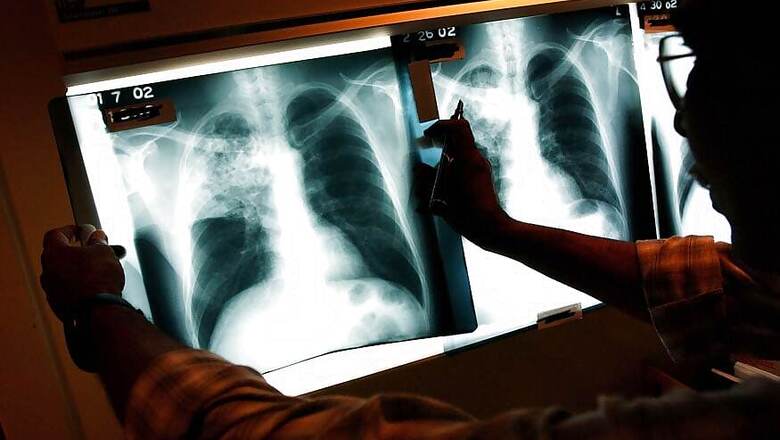
views
New Delhi: Despite a reduced number of Tuberculosis deaths in 2016, India continued to have the highest TB casualty in the world. WHO’s Global Tuberculosis Report 2017 has recorded 4.23 lakh TB deaths (without HIV) in India, a slight dip from the 4.8 lakh deaths in 2015.
The World Health Organisation report said that there were a total of 1.04 crore deaths globally, with seven countries accounting for 64% of these deaths. India, with the highest casualty rate leads the pack of these seven nations, followed by Indonesia, China, Philippines, Pakistan, Nigeria and South Africa.
India alone has contributed to 33% of the total 1.04 crore global deaths due to TB (without HIV) and 26% deaths among HIV+ cases. However, mortality of TB patients with HIV has also dipped from 37,000 in 2015 to 12,000 in 2016.
Efforts put in across the world to combat the menace of Tuberculosis have saved an estimated 53 million lives since 2000 and the mortality rate has come down by 37% globally. Yet, TB remains the most killer infectious disease in the world.
"While the world has committed to ending the TB epidemic by 2030, actions and investments don’t match the political rhetoric. We need a dynamic, global, multi-sectoral approach," said Dr Tedros Adhanom Ghebreyesus, Director-General of WHO.
Despite a dip in mortality, the report is a warning and says, “The latest picture is one of a high burden of disease and progress that is not fast enough to reach targets. TB is the ninth biggest killer disease worldwide and the leading single infectious agent, ranking above HIV/AIDS.”
A total of 19.36 lakh cases were notified in India in 2016, of which, 17.63 lakh cases were either new or relapse. This is up from 2015’s notifications of 17.4 lakhs.
The treatment coverage of TB has gone up from 59% to 63%.
The WHO report also noted that India's funding for TB has gone up from an annual budget of $280 million in 2015 to $525 million, which is quite a drastic growth. Domestic spending on TB has gone up from 32% of the annual budget to 74%, thus decreasing its dependency on international funding.
This growth is significant as India's numbers determine where the global fight against TB is headed.
The earlier 2016 report came as a shock for the global community when a huge number of previously unreported TB cases from the country’s private sectors came to light, hiking the number of cases.
However, of the 6,00,000 cases that have become resistant to the most effective first line drug — rifampicin — 47% are in India, China and the Russian Federation.
India is one of the 14 countries to have the highest Multi Drug Resistant TB (MDR-TB), TB and HIV. The fact that 21% of MDR-TB deaths are in India, affects the figures of drug resistant diseases globally.
Tuberculosis incidence is falling at about 2% per year. However, by 2020, it has to go up to at least 4-5% per year, to reach the 2020 goal of ‘End TB Strategy’.
India, especially needs to close its gap between the incidence of TB and reported cases, as at 25%, it's the highest in the world, allowing an alarming number of cases to fall through the cracks.




















Comments
0 comment